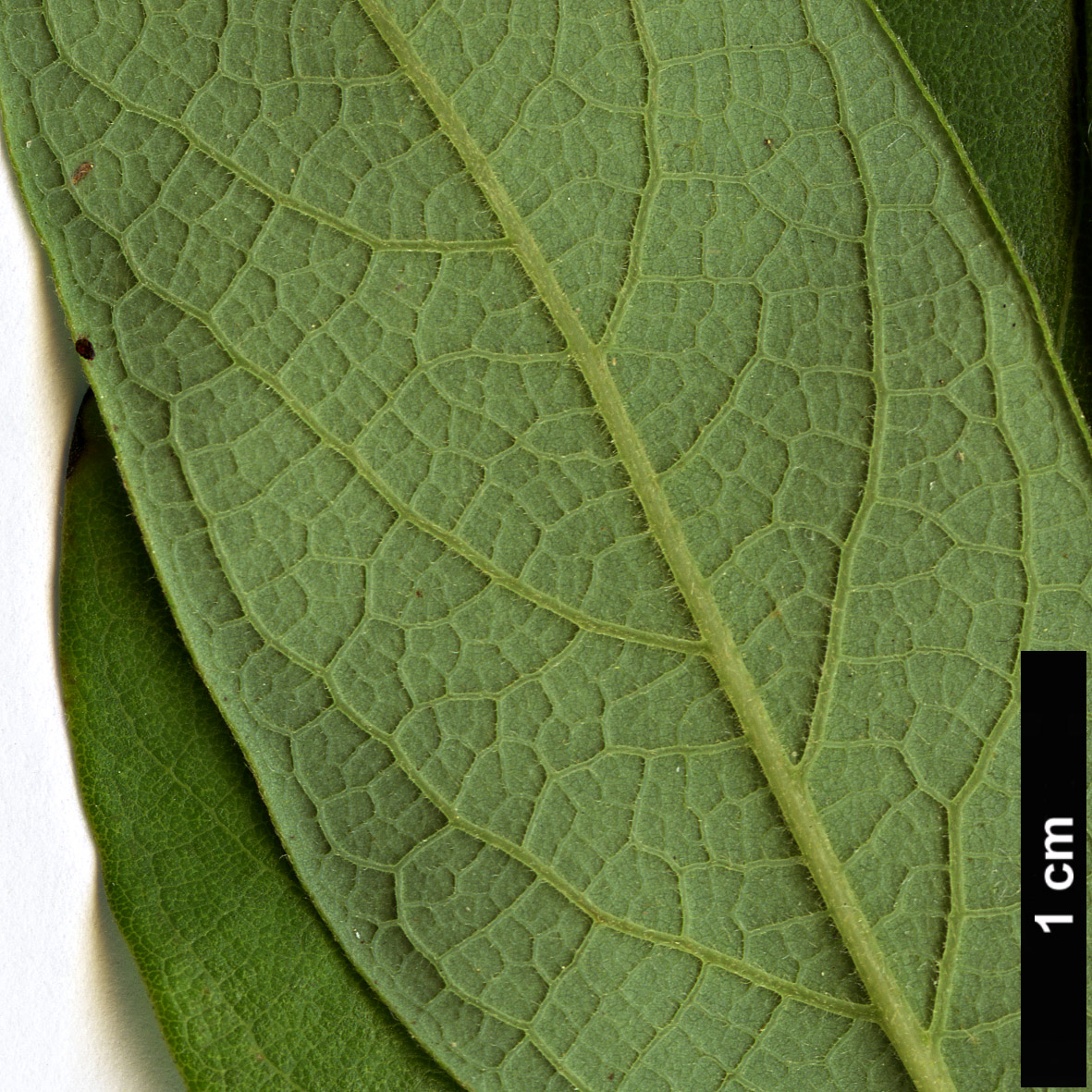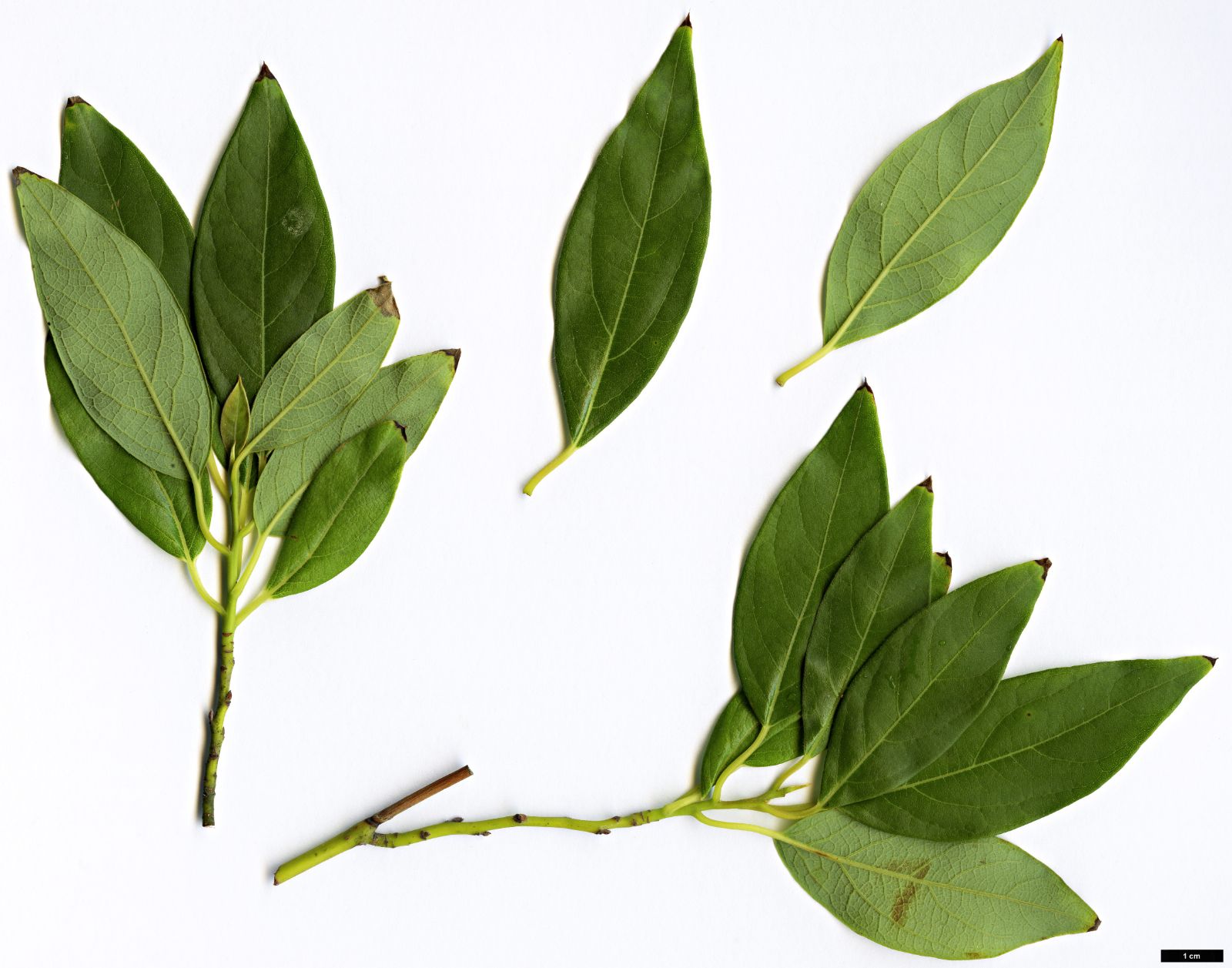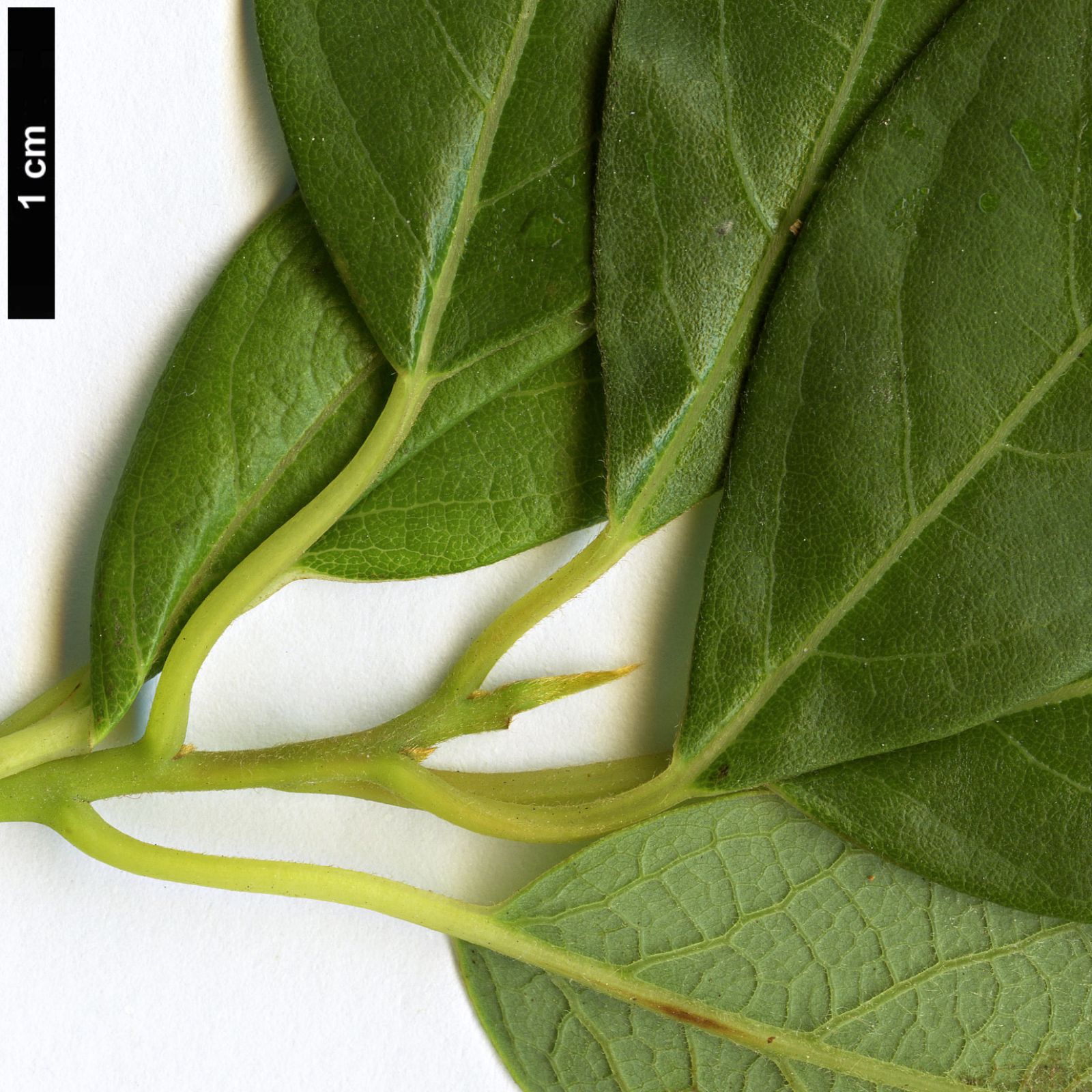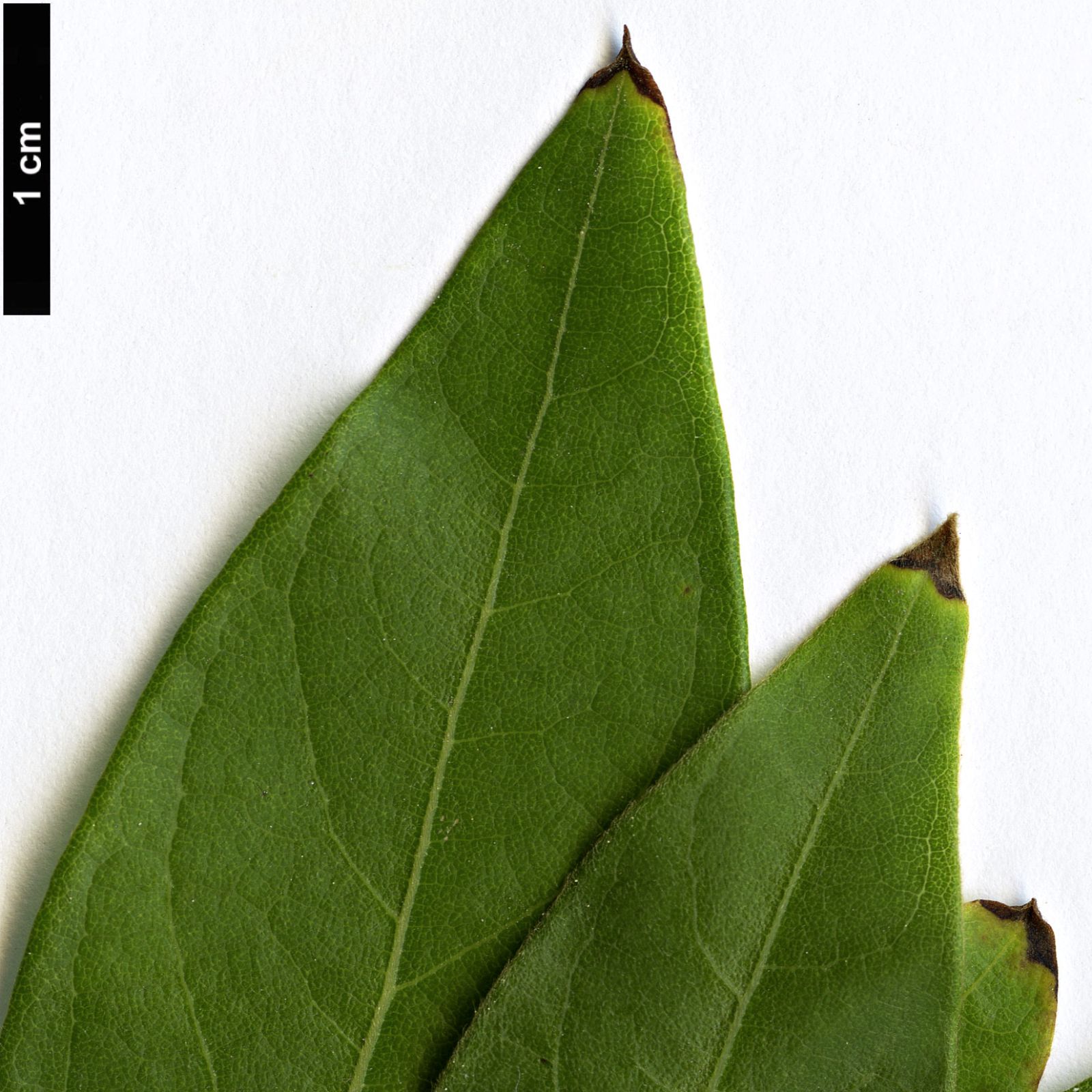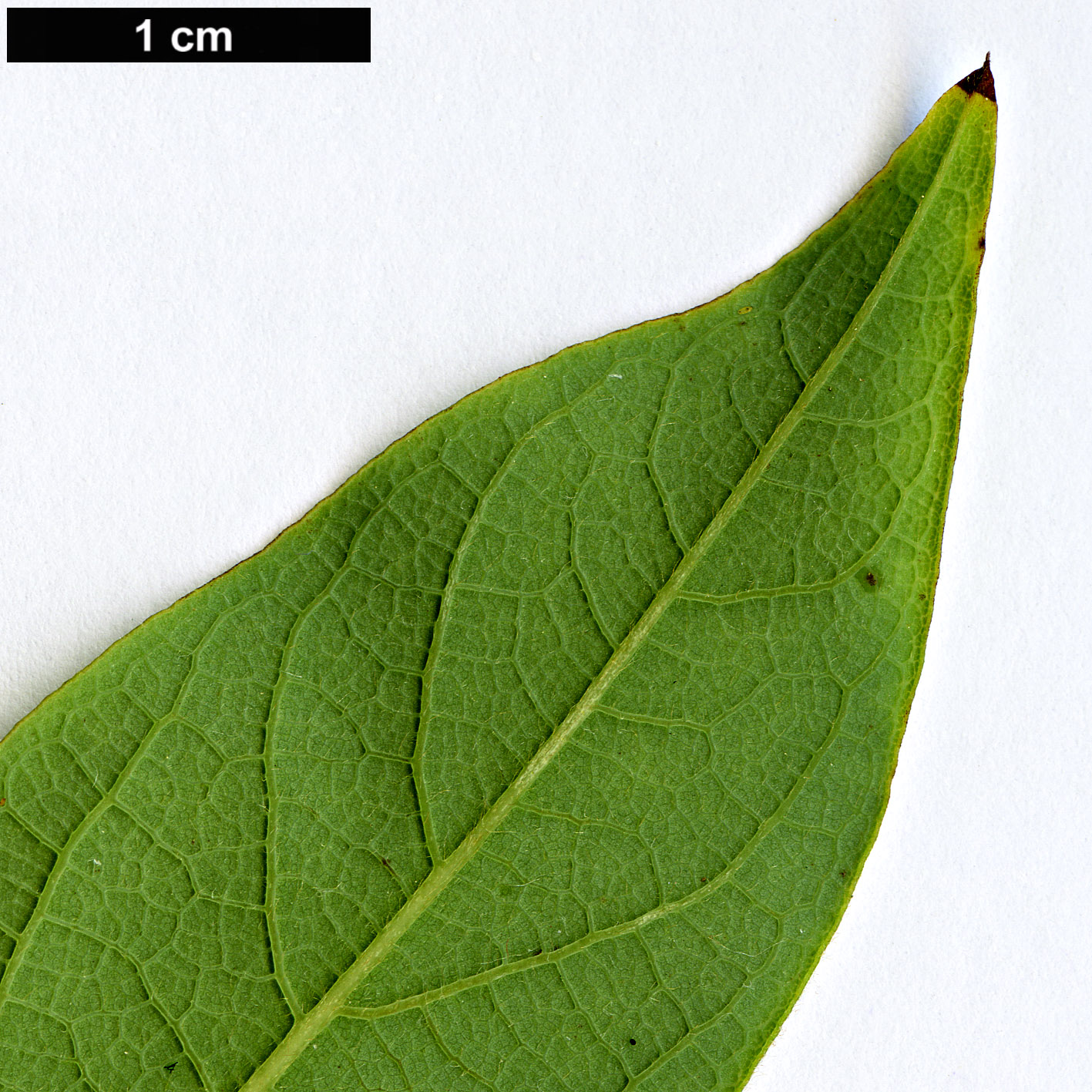Lindera assamica
Sponsor
Kindly sponsored by
a member of the International Dendrology Society
Credits
Julian Sutton (2023)
Recommended citation
Sutton, J. (2023), 'Lindera assamica' from the website Trees and Shrubs Online (treesandshrubsonline.
Genus
Other taxa in genus
- Lindera aggregata
- Lindera akoensis
- Lindera angustifolia
- Lindera benzoin
- Lindera chienii
- Lindera communis
- Lindera erythrocarpa
- Lindera floribunda
- Lindera fragrans
- Lindera glauca
- Lindera megaphylla
- Lindera melissifolia
- Lindera metcalfiana
- Lindera neesiana
- Lindera obtusiloba
- Lindera praecox
- Lindera pulcherrima
- Lindera reflexa
- Lindera rubronervia
- Lindera sericea
- Lindera tonkinensis
- Lindera triloba
- Lindera umbellata
Deciduous shrub or small tree to 10 m. Young branchlets smooth, tomentose. Leaves pinnately veined, with 6–8 pairs of lateral veins, veins raised and very prominent on the undersurface; blade stiffly papery to thinly leathery, elliptic, 9–16 × 3–4.5 cm; tomentose when young, becoming pubescent on veins beneath when mature; base cuneate; margin entire; apex acute or shortly acuminate; petiole 0.6–1 cm. Umbels in groups of 1–3 on very short axillary shoots, on slender peduncles 4–17 mm, each umbel many-flowered with 4 broad, subglabrous bracts 4–6 mm long. Flowers on 2–4 mm silky pubescent pedicels; tepals oblong, 6 mm. Fruit broadly ellipsoid, ~1 × 0.8 cm, red maturing to black, with slightly enlarged undulate perianth cup ~4 mm across, on 1.3–2 cm pedicels. (Grierson & Long 1984; Crûg Farm Plants 2023).
Distribution Bhutan Myanmar India N Nepal
Habitat Warm broad-leaved forest, 2100–2400 m in Bhutan.
USDA Hardiness Zone 8-9
RHS Hardiness Rating H4
Conservation status Least concern (LC)
This deciduous species from the Himalaya and Myanmar is scarcely known in Western gardens; we include it briefly on the basis of a single recent collection which has had a modest distribution.
Usually a shrub (Crûg Farm Plants 2023), sometimes a small tree, Lindera assamica belongs to the large group of species with pinnately veined deciduous leaves. Unlike others we describe, even the smallest reticulate veins on the lower surface stand proud, a most elegant look noted by Kurz (1877). Like many linderas, there has been much uncertainty around which plants should be included within the species, and its wild range. Chinese material collected under this name has more leathery leaves and stouter peduncles and is now placed in L. kwangtungensis (H.Liu) C.K.Allen, which does not have the ‘fragile, delicate appearance’ of the Indian material (Allen 1941). Some sources include Vietnam in its range (Royal Botanic Gardens, Kew 2023), others do not (IUCN 2023), but it seems unlikely given its absence from China (Cui & van der Werff 2008).
The Crûg Farm collection BSWJ 13984 (below the Singalila Ridge at about 3200 m, West Bengal, India, 2013 – Crûg Farm Plants 2023) has been attributed to both L. assamica and L. neesiana. A plant grown for a while at Bonn University Botanic Garden, Germany, was confirmed as L. assamica by Jan De Langhe in 2020 (pers. comm.; see images below). Both species are known in the area, but L. neesiana differs in its tri- or triplinerved leaves. We have not yet examined material from similarly labelled BSWJ 13983, collected in the same area. These plants have had some commercial distribution and it will be interesting to see how they perform in gardens. The hardiness ratings above are still little more than a guess.

